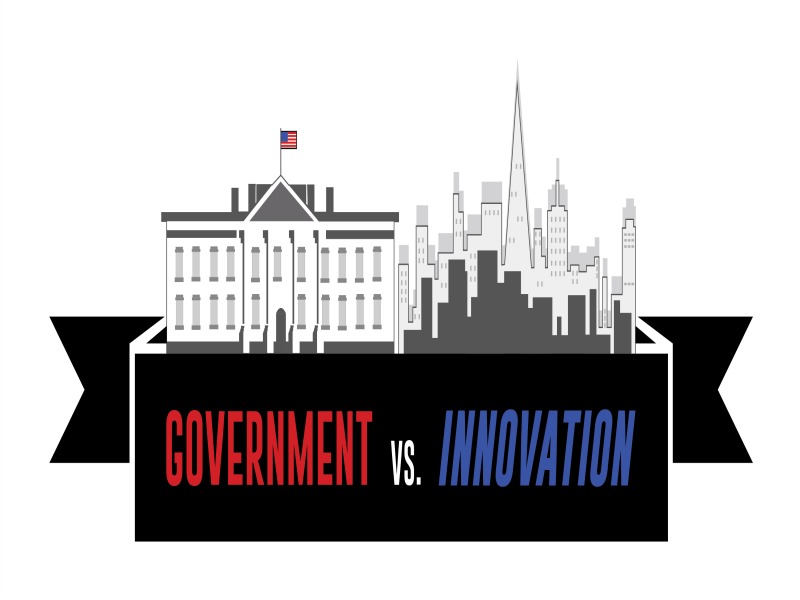Sparkpr 08 Jan 2015 // 2:08PM GMT

A recent survey of Silicon Valley influencers by The Atlantic listed government regulation and bureaucracy as a serious threat to innovation in the United States. Toss in the topic of net neutrality and you turn a simmering discussion into a raging debate rife with partisan themes and passionate declarations. These debates are not new.
In 1992, former U.S. Senator and 1972 candidate for president George McGovern penned an op-ed in the Wall Street Journal. He wrote, “to create job opportunities we need entrepreneurs who will risk their capital against an expected payoff.” He continued: “Too often, however, public policy does not consider whether we are choking off those opportunities.” McGovern’s perspective was that of a person who had been both a policy-maker and an entrepreneur.
Today McGovern’s words are still fresh and insightful, yet, while McGovern took a run at entrepreneurship as the proprietor of a hotel - an industry with a long history of regulation - today’s entrepreneurs are developing new technologies that are resulting in new business models, which do not fit the definitions of existing laws.
Uber, Tesla and AirBnB are only a handful of many introducing new business opportunities through disruptive technology, and in doing so, going toe-to-toe with public officials working against them to enforce decades-old regulations. To their credit, these regulators are charged with ensuring public safety and a fair market, and are right to perform due diligence. We need is a 2015 version of Mr. McGovern to lead the charge.
And there are individuals stepping up. In San Francisco, we’ve seen Supervisor David Chiu’s work with AirBnB and city regulators, hospitality unions and tenants’ rights groups to reach an agreement to deliver a law making AirBnB’s short-term rentals legal. Tesla – and to a lesser extent Uber – have worked with local regulators around the nation to keep their doors open, but still allay regulator’s concerns.
A Broken System
Elon Musk recently commented: “Whenever there is a law or regulation, it should come with some kind of sunset clause. Otherwise, it will last forever.” Musk’s observation is representative of a larger issue, which is that the regulatory process as a whole is out of step with the era in which we live. Technology is advancing so quickly that no law charted with regulating it should be expected to remain effective for more than a decade. If government wants to keep pace with technology and not do greater harm than good, it needs to not only understand new technologies, but also redefine how regulations and policies are created and enforced.
The entrepreneurs behind these technologies are well aware of the regulatory landscape before they enter a market. The people running these companies decide how to address regulators and a system of bureaucracy that often favors incumbent players. Will they take an Uber-like guerrilla approach and attack new cities with a fleet of black cars to win constituents over before regulators know what happened and incumbents have a chance to react? Or will they work with regulators in the early stages of their product development to ensure compliance with local and state policy?
Both of these approaches have advantages, but the smart money is on ensuring both start-up success and regulatory compliance. To be certain, any great technology - and the business it drives - will eventually have to answer to governing bodies in order to prosper. And no elected or appointed official will survive the next election if they’re responsible for shutting down a popular service or product. Entrepreneurs and policy makers should meet early and often to understand the impacts of a new technology and how it can be properly regulated to maintain a fair market and public safety.
McGovern’s comments show that regulation was a thorn in the side of private enterprise long before any entrepreneur made an app. This conflict is inherent in the design of public and private sectors that each seek to meet different objectives. What is unique today is the degree to which recent government gridlock – juxtaposed with breakneck and complex technological advancement – is exacerbating this divergence. It is this rift that results in a situation where one side – technology companies or government – cannot bear the weight of responsibility for the other in reaching a solution.
It’s a two way street. Silicon Valley needs to articulate their technology and business opportunity to Washington to ensure mutual understanding. Washington must actively work to remove partisanship from regulatory processes, and seriously consider an updated model for developing new policy and revising existing regulation to accommodate the technology-defined society in which we live. If the United States wants to remain a leader in technological innovation it will demand compromise from both Silicon Valley and Washington DC. It will require reasoned, thoughtful debate that focuses on the future, not the past. Or as McGovern wrote, we need to assume the “general acknowledgment that government must encourage business to expand and grow.”
Trevor Hammond is Director of Policy & Advocacy Practice at Spark PR


































.jpg)














